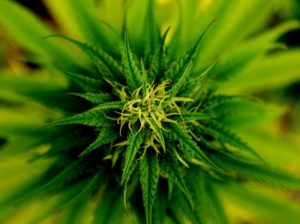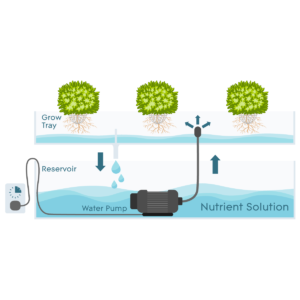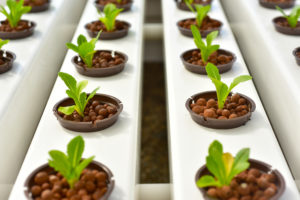Once you have your hydroponic system set up, you have to take good care of it. At first, hydroponic system maintenance can seem daunting, but don’t worry. Once you have the basics down, it gets much easier. We’ll take a look at the basics of hydroponic system maintenance and monitoring, so you can keep your system clean and your plants happy.
What is the first thing you need to know about hydroponic maintenance?
Keep a log.
It’s best to have a designated notebook (or spreadsheet if you are really eager) to keep track of everything related to your system. Make sure you keep each section clear and separated, and date everything you record in your log.
What do you need to record in your log?
A log will be your comprehensive guide to reference any aspect or change in your hydroponic system.
The things you need to record include:
- pH level
- EC readings
- Temperature
- Humidity
- Partial water changes
- Large water changes
- Photoperiod (length of light cycles)
- Nutrient additions
- Any changes in the health or appearance of your plants
- TDS
- Special nutrient formulas, including amount and ratio added
- Regular system cleaning
This might seem like a lot of recording, but it’s actually simpler than it sounds. Since you will be regularly monitoring and maintaining your hydroponic system, it’s best to record each item in your logs as you go along.
Monitor pH and EC
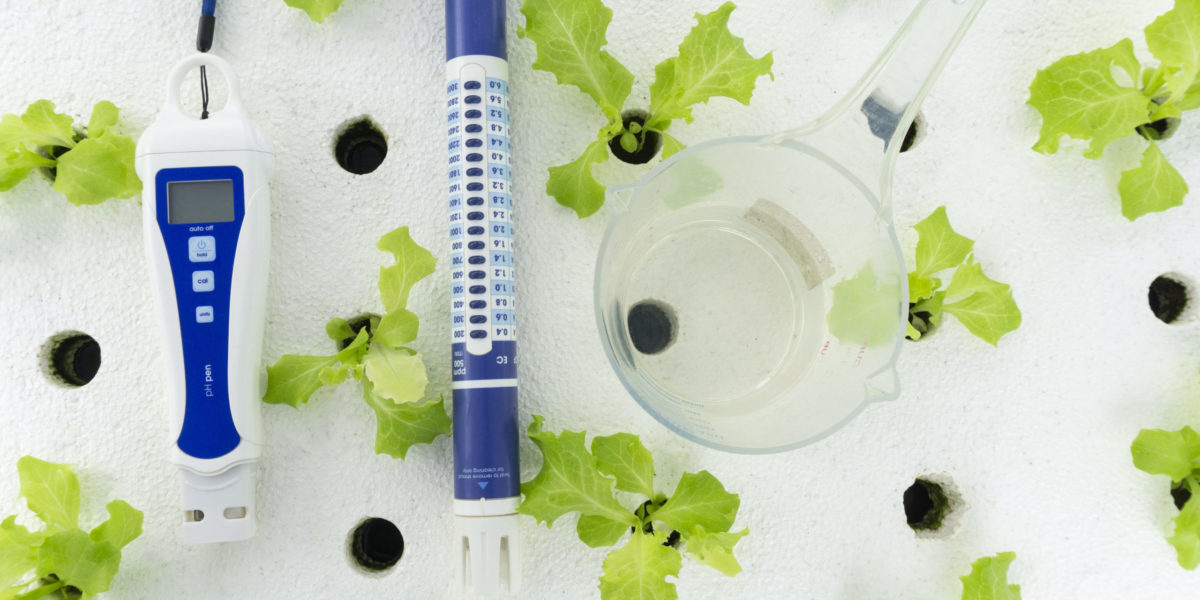
The first things we’ll discuss are pH and EC readings. When your system is fairly new, you need to monitor your nutrient solution more frequently. Begin by testing your nutrient solution at least once or more daily. As your system becomes more established, you will get a better ‘feel’ for it and can reduce the frequency that you test at. After a while, you dial down your testing to every few days. The exception to this is when you add extra nutrient solution to your reservoir; you need to test pH and EC levels any time you add nutrient solution to maintain steady levels.
Smaller hydroponic systems will need to be tested more frequently, since any added nutrients or evaporated water will create a more significant change in your EC and pH. You can test your pH and EC a few different ways, whether you choose an electronic meter, test strips, or a drop test kit.
Create special columns in your log to record each reading for pH and EC, along with the date you took the readings. Ideally, you will see little variation once you have achieved a stable level in your system. Follow the same procedure for each time you test TDS, temperature, and humidity. Again, these should be fairly stable, and if a reading shows a significant difference, it may indicate a problem within your nutrient reservoir, or your hydroponic system itself.
When you log your photoperiod data, it will remain constant unless you change your lighting schedule. Depending on the growth stage of your plants, the photoperiod will change so you can give optimal lighting for each different stage.
What about logging nutrients in hydroponic systems?
Keep in mind that you won’t always add nutrients when you add water to your hydroponic reservoir. That’s why you need to log separate sections for water changes and nutrients. While you might top off your reservoir with water daily, you’ll be working with hydroponic nutrients once every 7 to 10 days. Make sure to note whether you use your typical nutrient solution mix or are using a special nutrient booster (mostly used for certain growth stages).
You can count on a general range for the strength of the nutrient solution in your hydroponic reservoir, which will typically range from 800 to 1500 ppm. Because you’ll do water ‘top offs’ using water with no nutrients added, it’s easier to maintain balance when nutrient content would otherwise be higher- as water evaporates from the nutrient solution, the concentration of dissolved solids becomes higher. The fresh water serves to dilute the solution in the reservoir.
Remember, you need to measure ppm and EC levels any time you add, remix, or clean nutrients within your hydroponic system.
Now, you’re probably wondering…
What about water changes for hydroponics?
This is one area that you need to log as specifically as possible. Not only do regular hydroponic water changes help keep your system stable and healthy, but it also helps you determine when to do larger water changes. A big part of hydroponic system maintenance is creating stability.
How often should you change water in hydroponics?
First, you need to know that we are going to discuss two different types of water changes in hydroponics. The first type is smaller water changes, often referred to as ‘topping off.’ The next is larger water changes, and these are much less frequent. Water changes are one of the most important parts of hydroponic system maintenance.
As your plants take in nutrient solution, you’ll see the water levels in your reservoir go down slightly. Of course, some water will evaporate out of the nutrient solution too, which will also reduce the water level. Depending on the size of your system, the ambient temperature and humidity in your grow room, whether or not you have your reservoir covered (which we recommend if you’re not using a system with your grow tray directly above it), and even the growth cycle of your plants, the water level will decrease at different rates.
That’s why it is important to examine your reservoir daily. Any time you notice a decrease in the water level of your reservoir, it’s time to add more and ‘top off’ your reservoir. Do not just dump in water until it looks full again, tempting as it may be. You need to measure exactly how much you are putting in.
Adding water to your system
When you add water to top off your system, record the date and the amount of water added into your log. If you add half a gallon, record it. If you add a quart of water the next day, log that too. While you will not need to reference the amount of these top offs for a couple of weeks, you will need them to determine when it is time for a larger water change.
After you top off your system for two to three weeks, you will need to do a larger water change. It is time to do a big water change when you see that the amount of water you have added through topping off your reservoir is equal to the capacity of your reservoir (and you should know how much it’s able to hold).
For example, if your reservoir holds 20 gallons, and your logs show that you add about 10 gallons per week when you top it off, it should take about two weeks before you need to do a larger water change.
Water change example
Here is an example of how it might look when you log top off water changes:
Assume you have a reservoir that holds 20 gallons.
Top off water added (in gallons):
- Day 1: 1
- Day 2: 1.5
- Day 3: 2
- Day 4: 1
- Day 5: 1.5
- Day 6: 1.5
- Day 7: 1
- Day 8: 1.5
- Day 9: 1
- Day 10: 2
- Day 11: 1
- Day 12: 1.5
- Day 13: 2
- Day 14: 1.5
- Day 15: time for larger water change, top offs equal 20 gallons
As you can see, rather than topping off your water as you reach Day 15, you’ll do a water change instead. Throughout the two weeks in the log, the smaller amounts of water that you’ve added now equal 20 gallons. Since your top offs now equal the full 20 gallons your reservoir holds, you can proceed to a larger water change.
Of course, this is simply an example, and your actual top off amounts will vary.
When you have reached this point, your levels should be fairly consistent, and you can empty all of the water from your reservoir. Of course, you’ll then replace it with new water, and add nutrients as is appropriate.
Make sure you log how much water you’ve drained from your reservoir, as well as any nutrient mix you added, and the amount of nutrients. Then, make sure you test your pH and EC levels, and record it in your log. It may be helpful to put a note near these figures to remind yourself that the readings were done after a larger water change, especially if you are still getting to know your system.
When should you clean your hydroponics system?
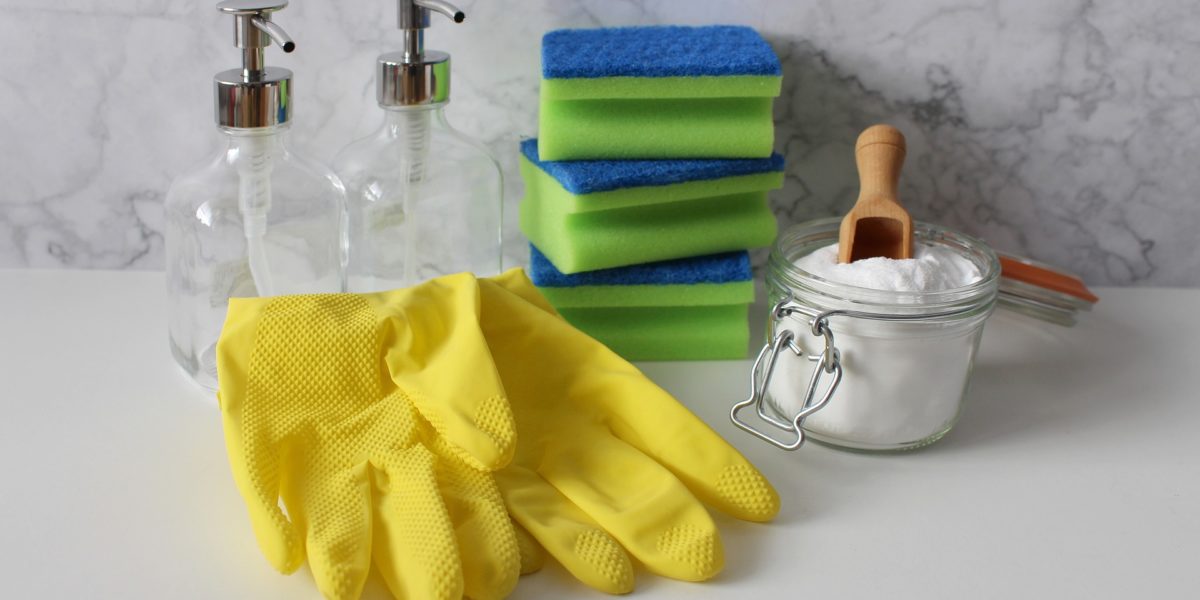
A clean system means you keep healthier plants and minimize the risk of getting sick plants. Of course, you’ll mostly be cleaning your reservoir when you have plants actively growing. This keeps the water clean, but also avoids chemical damage and imbalance to your plants.
When you do a larger water change, it is time to clean your hydroponic reservoir. You can do it more often, up to once a week, although that is more work than it is worth. Typically, you will clean your hydroponic reservoir every 2 to 6 weeks. This varies depending on how often you need to add and change water, as well as the size of your system. Sterilizing is different and eliminates any microorganisms. You’ll sterilize your system between each harvest, or after severe problems with pests and pathogens.
Cleaning the reservoir
Now, let’s look at how to clean a hydroponic reservoir. Take out and unplug any components within, or attached to your reservoir (such as pumps, airlines, tubing, etc.). Drain the nutrient solution from your reservoir.
What can you use to clean your system?
You can clean your hydroponic reservoir with hydrogen peroxide mixed with water, or with a mixture of vinegar and water. Try to avoid chemicals and bleach if you have plants growing in your system. If you do use chemicals, make sure they are properly flushed and that no excess remains.
If you use hydrogen peroxide, dilute it with water in a 2:1 ratio. Use a weaker concentration; 35% hydrogen peroxide is ideal. Just make sure you are using food grade hydrogen peroxide. If you are using vinegar, you can dilute it at a 1:1 ratio with water. Vinegar is an ideal organic cleaner, and do not worry, the smell dissipates quickly.
Always wear gloves when cleaning your hydroponic tank, and work in a clean, uncluttered area.
Maintain a clean reservoir
Use a sponge to scrub the inside of your reservoir with the solution. Start at the bottom, or base, or your reservoir and work around it, making sure to scrub each part of the walls. Drain any leftover cleaning solution. Rinse your reservoir with fresh water. You will want to do this a couple times at least, to make sure you have any cleaning agents removed. Some hydroponic gardens even keep an extra sponge and bucket of water on hand to do a scrub with clean water before rinsing the tank.
Once you have thoroughly rinsed your hydroponic tank, you need to dry it out. You can choose to dry it yourself with a cloth. Just make sure there are no fibers or particles left behind. The best choice, time allowed, is to allow your tank to air dry. It is simply cleaner and reduces the risk of anything getting left behind.
When your reservoir is dried out, fill it with fresh nutrient solution, and record nutrient and pH readings.
It is time to look at the other ways to maintain your hydroponic system:
Namely, your plants.
Hydroponic plant maintenance
An important part of keeping healthy hydroponic plants is paying attention to them. It’s not enough to simply monitor and maintain your hydroponic system- you need to examine your plants regularly. If you take time to inspect your plants, you can spot problems right away, rather than notice an issue only when your hydroponics plants are dying. Think of hydroponic system maintenance as a holistic practice.
As you test and change out the water, make sure the water looks clean. Basically, make sure you don’t see debris, algae, or fungus developing. Check the water and make sure you dont’ notice any discoloration.
Start by looking at your plants’ roots if you are using a system where plant roots are visible. Healthy roots should be smooth in texture, with a pearly or creamy white color; new roots are often whiter than older growth.
Signs of problems in root systems can include:
- Yellow or brown color
- Very tangled root system
- Having a slimy feel or appearance
- Having an abnormal odor
- Blackish color, dying or dead roots
Any of these signs can indicate root rot, chemical burn, or even harmful bacterial and fungal presence. The good news is that if you recognize these symptoms early on, you can usually save your plants and prevent the problem from spreading.
After you examine the roots, you need to have a closer look at your plants. Healthy plants have fairly uniform color throughout the leaves, with a regular growth habit, and leaves that are not curled or malformed.
Signs of problems in plants can include:
- Limp or curled leaves
- Edges of leaves are curled or look ‘ruffled’
- Burnt spots on leaves (especially the tips)
- Spotting on leaves
- Necrosis (death of plant tissue)
- Yellow colored new growth
- Abnormal deep violet or green color
- Leaves’ veins turn pale
- Yellowing between leaf veins
- Narrowing leaves or malformation
- Scorched appearance
- Holes in leaves
- Visible pests on plants
- Small, thin webbing on plants
- Limp stems
Many problems with plants in hydroponics occur as a result of improper nutrients (whether it is an excess or deficiency), improper conditions (such as temperature, lighting, or humidity), or a pest infestation. Much like problems within the root system, these issues can typically be fixed if you catch them early on.
The best thing you can do for hydroponic system maintenance
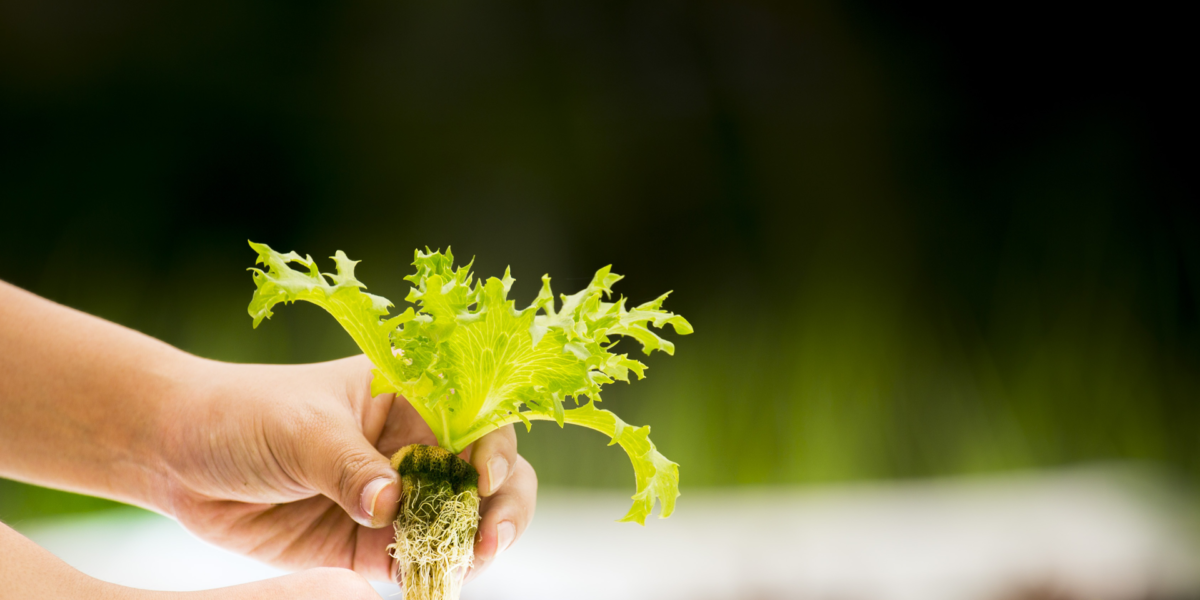
Be diligent about observing your system and keeping it stable. Regular hydroponic system maintenance is an ongoing process. You may notice some levels fluctuating as you get your hydroponic system established; small changes aren’t usually going to cause large problems. However, if you notice consistent issues or changes in your system, you will be able to prevent large problems later on.
